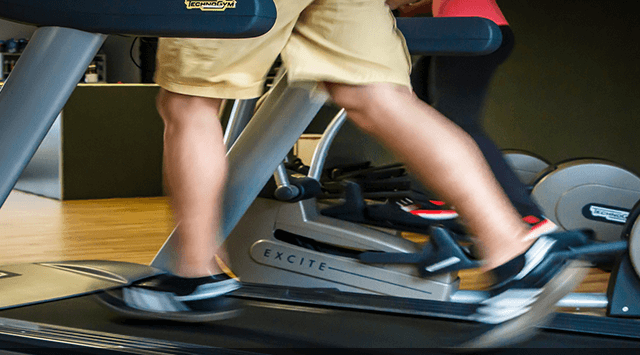Interval Training – How to Get Started
When you adopt a ketogenic lifestyle, what you eat is crucial as you can never out exercise a bad diet. Exercising or moving is still important and the most effective exercise to add to your routine is High Intensity Interval Training.
If you are not sure whether you should be training while on a ketogenic diet, then read - Should I exercise on a ketogenic diet?
Before we look at the easiest way to get started with high intensity interval training, let's first have a quick look at what it is and the benefits.
What is High Intensity Interval Training (HIIT)
With HIIT you alternate between bursts of intense exertion where you give 100% effort and then alternate it with low intensity exercise.
One example is to sprint for 30 seconds to a minute intervals and then to jog or power walk for some minutes in between.
The beauty of this type of exercise is that you use up any glycogen energy stored in the body and can then burn body fat. This process continues even after training.
The beauty of HIIT is that you use up any glycogen energy stored in the body and can then burn body fat.
If we consider that when we follow a ketogenic diet, our objective is the same in that we exhaust glycogen stores and live of ketones or clean fuel. My logic then tells me that this type of training was almost developed with the ketoer in mind.
Benefits of Interval Training
- By burning up any glycogen stores, it helps the body to get into or to get back into ketosis
- HIIT burns more calories than steady state cardio
- It is quick
- It increases metabolism
- No equipment is needed and it can really be done anywhere
- It improves overall fitness
- HIIT sharpens the mind
Interval Training - How to Get Started
How to start very much depend on how active you already are, how fit you are and how healthy you are.
Before You Start
HIIT training really is just as easy as it sounds and simply involves alternating between periods of high exertion and relatively low intensity exercise. There are a few caveats however and it is important to approach this in a sensible and structured way in order to avoid injury or disappointment.
Note: Before beginning an intensive training routine, it is always a good idea to consult with your doctor and to ensure that you don’t have any underlying heart conditions!
Most people will begin their HIIT with running as this is a very straightforward form of cardio training that doesn’t require access to any specialist tools and that anyone can understand and use.
There are countless HIIT protocols however and these vary in length and intensity.
The key thing to recognize here is that high intensity training of any kind can be highly dangerous if you have never done it before, if you’re very overweight or if you’re in very poor physical health. It may also be dangerous if you have any pre-existing heart conditions.

In short, you need basic heart strength before you start pushing it to 100%. Thus, it is a good idea to build up at least a basic level of fitness before you start your HIIT training. If you’re still gasping for breath whenever you ascend the stairs, then you’re not ready for HIIT.
But here’s the thing: even if you’re used to exercising regularly and you’re in good shape, switching to HIIT will still come as a very big shock if you’ve not used it before. This is a whole new ball game in terms of the demands it places on your body and you’ll be surprised at how quickly you end up in a gasping heap on the floor!
If you’ve never exercised before or are unfit, then read the next section on how to first build up a basic level of fitness. If you’ve not used HIIT before, but you’re generally in good shape then go straight to the gentle introduction to interval training.
Build up a basic level of fitness
Before you start pushing yourself to your cardiovascular limit, it’s a good idea to first build up that basic level of fitness that will prevent you from shocking your heart too much.

Right now, you might be thinking that you don’t need to worry about this and that it’s not likely you’re going to suffer heart problems. Even if you’re not worried though, building this basic level of fitness is important for your ability to stick with an intense HIIT workout.
Rushing into it is the mistake that too many people make – they launch straight into their training and hope that they’ll be able to keep up a pace that is far above what they find "comfortable".
The belief is that you need to be pushing beyond your comfort levels in order to lose weight.
You really don't, start slow. The important thing is to start.
But what actually happens is that you end up hating exercise and dreading your workouts. The result is that you’ll find yourself putting it off and unable to take part unless you’re feeling your very best. In no time at all, your training falls by the wayside and you give up!
So don’t aim to start losing weight or transform your fitness right away. Rather, focus on gradually improving your fitness so that your workouts are never outside the realms of comfortable to begin with. You’ll find that as you do this, you learn to do more and eventually this allows you to take on more challenging workouts and actually stick with them.
How do you build up this basic fitness?
The answer is to start with steady state cardio, using a gentle pace to begin with and then build up.
Begin with running but don’t aim to run a long distance or to run quickly to begin with. Instead, just aim to enjoy running. Set out with comfortable running shoes and jog carefully and slowly for up to half an hour. When it becomes painful, go home.
Do this once a week and over time, you’ll find that you start running faster and further without even trying. Importantly though, you won’t risk exhausting your body, you won’t damage your knees, overtraining or learning to loathe your training.
This can be very frustrating at first if you were hoping to get into great shape right away!
But what’s very important here is to be disciplined with yourself.
A lot of people think that getting into great shape is all about being disciplined enough to keep training.
Just as important though is to be disciplined enough to be patient and to build that basic level of strength before you approach the more intense types of training.

Build up your strength and stamina slowly and then you can look at adding HIIT workouts. And again, you’re going to start gently…
A gentle introduction to Interval Training
A lot of people will read the words HIIT and assume that this is one type of workout. In reality though, high intensity interval training is a very broad and flexible term that can encompass a great many different types of training and a great many different protocols.
One of the biggest mistakes you can make then, is to start HIIT and dive in right at the deep end with an intensive program aimed at the incredible fit. One of the most popular choices for instance is "Tababta".
This is a brutal, punishing, fast and highly effective method of training that will leave you gasping for air and covered in sweat in just 4 minutes.
But it’s also far too intense to start with and especially when running.

For most people the easiest is to start with simple running sequences. So let’s begin with a very easy beginner routine.
Easy Beginner Interval Training Routines
The Starting Point
- Stretch and warm up for a few minutes
- Jog for 2 minutes
- Sprint for 10 seconds
- Repeat this five times
- Finish this with a 10 minute cool down (walking and stretching)
It sounds very easy but you’ll quickly find that just 10 seconds of sprinting is more than enough to completely exhaust you. By the time you’re finished, you’ll be completely exhausted and you’ll feel as though you can’t perform another 2 minute jogging session.
The workout itself will take you 12 minutes but you’ll find you’re easily as tired (if not more tired) than you would have been after jogging at a steady state for 30-40 minutes!
Moreover, this is enough to trigger the after burn effect and to leave you burning calories for hours afterward.
Because this type of training is so fast, you can afford to do this 2 or 3 times a week. Once you start to become more confident, you can then move on to the next step up.
- If this is still too intense, start with 3 sprinting sessions and work up to the six over a few weeks.
Next Level
- Stretch and warm up for a few minutes
- Jog for 2 minutes
- Sprint for 30 seconds
- Repeat this five times
- Finish this with a 10 minute cool down (walking and stretching)
You can also increase the number of sprints to 8 and then to ten.
- This is a really good level and unless you are a serious athlete, then don't push beyond this point.
Eventually, you might be able to work all the way up to...
Super Fit
- Stretch and warm up for a few minutes
- Jog for 1 minute
- Sprint for 30 seconds
- Repeat this 8 times
- Finish with a 10 minute cool down (walking and stretching)
Again though, you should only move on to these harder difficulty levels once you have built up the basic fitness and heart strength to be able to cope relatively easily.
You should be exhausted at the end but not to the point where you can’t do anything for the rest of the day, or where you’re unable to train again for days and days on end.
- Wow, if you train at this level, you are super fit. Still, always listen to your body.
Next Step
If you feel you are ready to start interval training, then follow our simple how to get started guide. If you want to know more about interval training, then why not download our HIIT It Hard guide here.
About the Author

Noline is a chartered accountant and therapeutic reflexologist who converted to the keto lifestyle after losing 55 pounds without counting calories or starving herself.
She is a student of Professor Tim Noakes and the Nutrition Network and feels compelled to share the low carb lifestyle with as many people as possible.
She does this at Essential Keto where she shares resources, recipes and her experiences, whilst working on losing that last 10 pounds.
